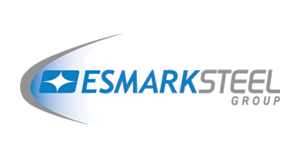By Corinna Petry
Ready to pounce. Esmark chief executive Tom Modrowski is still ready to “pick off” acquisitions even after buying a string of smaller rivals to reach its goal of notching up some $250 million in revenue.
Esmark Steel Group plans to be a leading consolidator in the service center industry, despite the current difficulty in evaluating companies post-recession and stiff competition from strategic and financial buyers that also are trying to consolidate, according to Tom Modrowski, the company’s chief executive officer.
Now that Esmark has re-acquired Century Steel LLC and Sun Steel Co. LLC, Chicago Heights, Ill., and Independent Steel Co. LLC, Cleveland—plus the intellectual property assets, brand names and trademarks of Great Western Steel Co., Chicago, and North American Steel Co., Homewood, Ill.—it is moving forward with its long-term plan to build trust with, and satisfy the needs of, stakeholders as well as expanding through additional acquisitions.
With the latest purchases, Esmark has already reached its goal of $250 million in revenue by the end of 2010, Modrowski said. “We have a nice foundation now and will start picking off a few (acquisitions) at a time and methodically grow,” he said in an interview with AMM.
“There are five stakeholders in the business: employees, shareholders, lenders, customers and suppliers. I think we do a pretty good job of satisfying the needs of all the stakeholders (and) never is a deaf ear turned toward any of those groups. If we have success in the future, it will be because of that,” he said.
With both strategic and financial buyers actively searching for acquisitions, “people do see the value in service centers right now. Everybody thinks the bottom is here and gone, and that the recovery is on,” Modrowski said. But he thinks that strategic buyers looking to invest and grow in the long term might be better served than those looking for a quick return in order to sell.
“It will be awhile before getting back to anything resembling 2007 and 2008 in valuations (for companies). Is it five, 10, 50 years? There needs to be consolidation and a reward for being a consolidator. There is no reward for doing that right now. To date, largely because of the global 2009 recession, the reward is not measurable at a level that’s visible.”
In part, the industry’s fragmentation means too many small distributors have access to supply. “Over time that will shift; little distributors will have to go to big distributors to get their needs met,” he said. In many instances, Esmark is more part of a mill’s distribution activities than strictly a customer, and he thinks Esmark will evolve to become more of a master distributor, supplying smaller service centers that have difficulty obtaining direct mill access.
Until this evolution occurs, “we target companies that fit in with the collection of assets we have. They are typically small, privately held, single-location facilities that are well run.”
Owners usually will sell when the next generation doesn’t want to operate the company and the family looks to liquidate its holdings. In addition, the past couple of years have been tough on small, family owned service centers, he said. “After a whole lifetime of trying to build value, they saw their net worth flash before their eyes. Do they want to stay on that roller coaster?”
As for other strategic buyers, such as publicly held Reliance Steel & Aluminum Co., Los Angeles, or privately held O’Neal Steel Inc., Birmingham, Ala., Modrowski called them “very well respected that you’d want to emulate.”
“There are a lot of formidable competitors in this space. Quality and pricing are givens,” he said. The key is differentiation, and Esmark hopes to prove that its trustworthiness and focus on service will be keys to its long-term sustainability.
One aspect of Esmark’s revival as a service center entity is how much easier it has been this time out due to the name recognition it built before selling the bulk of its assets in 2008 to Severstal North America, Dearborn, Mich.
“When Esmark started up in 2004 it was an unknown entity,” Modrowski said. “It was the individual acquisitions—Sun Steel and Century—that had the name recognition. It’s easier this go-around. When we started with ECT (Electric Coating Technologies) with just a handful of people, and nobody knew who we were, credit was next to impossible to get. When we came back, the reception was amazing. Hard work is still required—you still have to deliver every day and win customers back. But our relationship with GE Capital (Esmark’s primary banker) is strong, which made re-entry really easy, (and) the relationship with suppliers is easier.”
As it examines its acquisition options, it also is working on reviving Great Western and North American Steel.
“We are discussing right now when and how (to revive the brands) and how to roll out these companies to the market. The objective is to get everything in place and communicate that to customers by Jan. 1 (2011),” Modrowski said.
“We know where we’re going in terms of sales and production for both companies,” he said. Generally, once these firms are revived they could bring in 20 percent more revenue while regaining market share lost while the operations were dormant.
Esmark is emphatically not interested in acquiring steelmaking assets again. It sold Wheeling-Pittsburgh Steel Corp. to Severstal in 2008. “We have no desire to go back to steelmaking. Steel processing? Maybe,” Modrowski said.
The bottom line, is: “We are not done here. We’re going to be one of the consolidators in this fragmented industry and we hope to be rewarded for that while looking for shareholder value,” he said.
